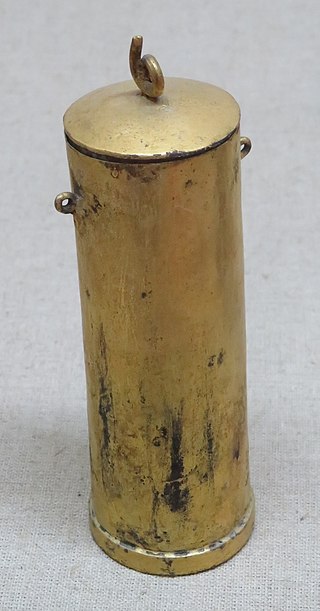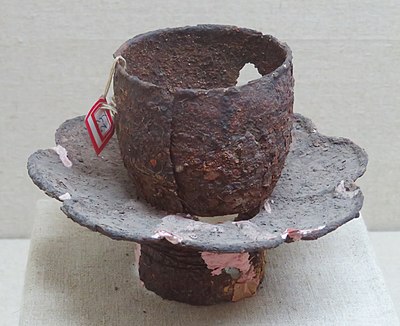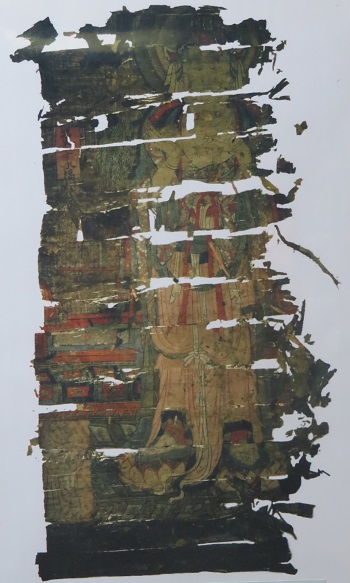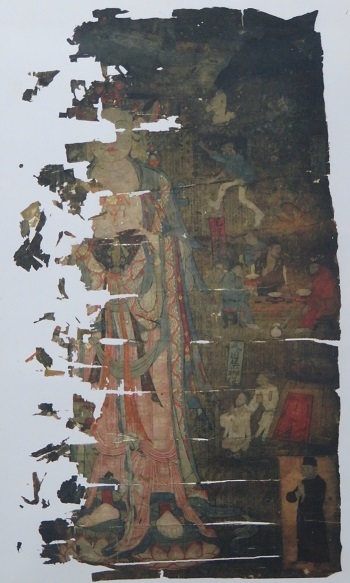Diary of a Rambling Antiquarian
Sunday, 1 October 2017
Lindong North Pagoda
Last August I visited the Liao Superior Capital and two nearby pagodas in Lindong, seat of Bairin Left Banner in Inner Mongolia. I arrived back in Lindong late yesterday afternoon after visiting the Qingzhou White Pagoda in Bairin Right Banner and the Zuzhou Stone House in Bairin Left Banner. This morning I walk to the North Pagoda (林东北塔). The pagoda is on the top of a hill in the middle of the town, but because of the jumble of tall buildings surrounding the hill the pagoda is only occasionally visible.
Lindong town centre with North Pagoda in the background
The pagoda is approached from the southeast along an alley leading up the hill from the main road. It is a solid brick hexagonal pagoda with five storeys, 13.7 m in height. The pagoda has a typical Liao dynasty form, but is much smaller than most surviving Liao dynasty brick pagodas, and has six sides rather than the normal eight sides. In 1990 the pagoda was restored, and seems to have been almost completely reconstructed with a cladding of new grey bricks and tiles. The south side has a false door, but the other sides are all plain. There are no surviving Buddhist sculptures like those on Lindong South Pagoda.
Approaching the North Pagoda from the southeast
South side of the North Pagoda
Lindong North Pagoda in the 1970s
Main section of the south face of the North Pagoda
Pagoda Stele
In front of the south side of the pagoda is a stele or tomb stone which seems to be quite old and potentially quite interesting. Unfortunately the stone very worn, and although there are some border lines visible on the top of the front side of the stone, I am unable to conclusively make out any writing. Near the bottom of the front side there are perhaps hints of a couple of horizontal lines of Tibetan writing, and maybe the Chinese character dài 代, but it could well just be my imagination. However, on the right side of the stone is a very clear cross, which seems to be a deliberate Christian symbol, but it may be a later addition.
Stone stele or tomb stone in front of the south side of the pagoda
Right side of stone showing a Christian cross
Detail of south side of stone perhaps showing traces of writing

The Pagoda Chamber
During restoration work in June 1990, a small closed chamber (天宫) was discovered at the top of the pagoda, and inside were found a number of Buddhist artefacts, some wooden model stupas, bowls Chinese medicine, and the fragile remains of a silk painting which had been deposited when the pagoda was constructed. Most significantly, the chamber included a glass bottle containing forty-eight crystal pebbles which were believed to be the relics (Sanskrit śarīra; Chinese 舍利子) from the cremated remains of a Buddhist master. The pagoda would have been constructed specifically to house these sacred relics.
Photograph of the contents of the pagoda chamber
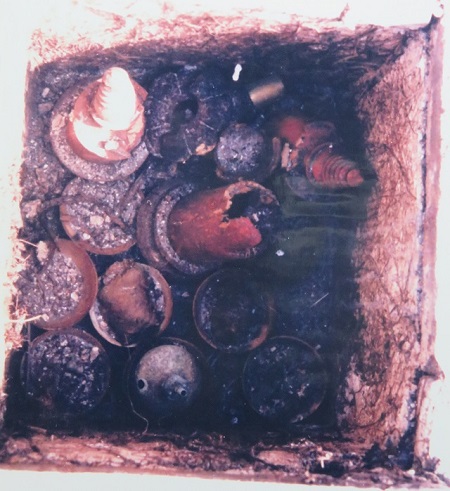
48 Buddhist relics and the glass bottle they were contained in

Bronze water vessel for Buddhist purification rites
Gilded sutra tube
Iron lotus throne
White glazed plates and bowls holding various types of Chinese medicine
Silk painting from the pagoda chamber
Baoji Temple
The pagoda is thought to have been built during the early part of the middle period of the Liao dynasty. In 1990, during restoration work on the pagoda, the site of a Buddhist temple was discovered on the southeast slope beneath the pagoda. Artefacts recovered from the site indicate that this was Baoji Temple (寶積寺), and that it was active during the middle of the Liao dynasty (916–1125). The North Pagoda must have been erected in the grounds of Baoji Temple to house the sacred relics discovered in the upper chamber of the pagoda.
Cinerary casket board dated 1082 for the monk Shanren of Baoji Temple
Cinerary casket board dated 20th day of the 10th month of the 8th year of the Dakang era of the Liao dynasty (12 November 1082) for the monk Shanren of Baoji Temple
大康八年十月廿日三[?]
寶積寺首座沙門善忍灰襯匣[?]
Redevelopment
By the side of the steps leading up to the pagoda there is an information board (which was not there when I visited last year) explaining how the area around the North Pagoda is going to be turned into a park. At present only the top of the hill, immediately surrounding the pagoda, is open space, and the rest of the pagoda hill is crowded with small residential dwellings. All the buildings will be demolished and the residents relocated to new homes in tower blocks.
The new park will comprise four areas: 1) Buddhist culture area (佛教文化区); 2) Sport and recreation area (康体休闲区); 3) Children's activity area (儿童活动区); and 4) Ecological fresh air area (生态富氧区). The pagoda will be the heart of the park, with a north-south axis of recreational features and an east-west axis of Buddhist features radiating out from the pagoda. Eight scenic spots will be strategically sited through the park (宝寺晨钟; 湖光塔影; 杏林闻莺; 梨花溶月; 樱花浣溪; 桃花宿雨; 海棠卧云; 丁香凝露).
Turning the area around the North Pagoda into a park seems like a fantastic idea to me, and I look forward to visiting again in the future when pagoda is the focal point of the new park. I also hope that during the construction of the park more archaeological discoveries may be made relating to the history of the pagoda and Baoji Temple.
Plan of the area around the North Pagoda before development
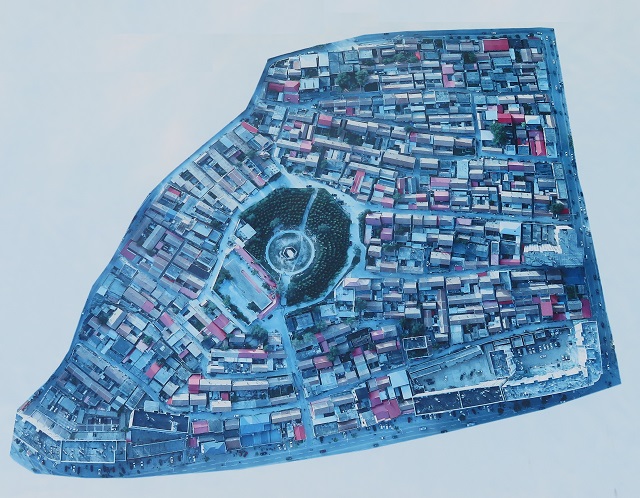
Plan of the area around the North Pagoda after development

The demolition of houses has already started, and posters everywhere encourage the residents to sign a contract to move into a new appartment home as soon as possible.
Alley leading up to North Pagoda with demolished houses on either side
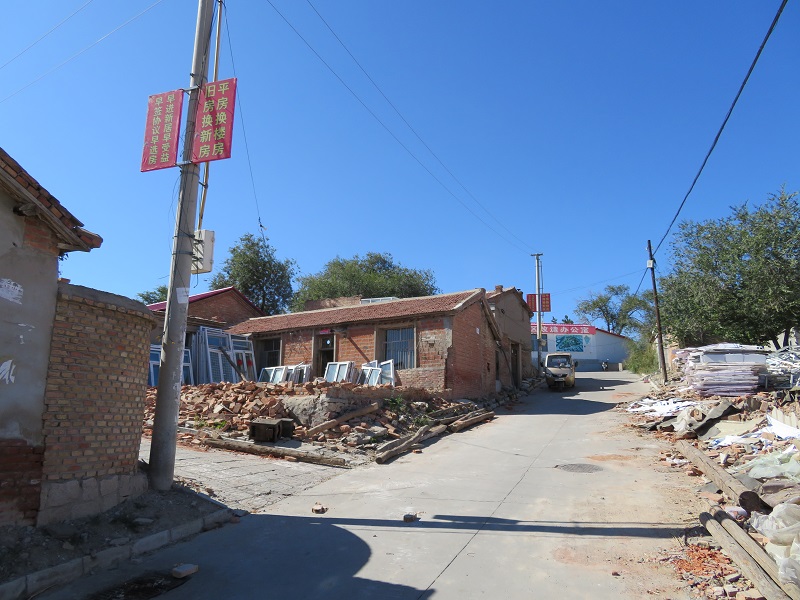
Signs encouraging residents to move out
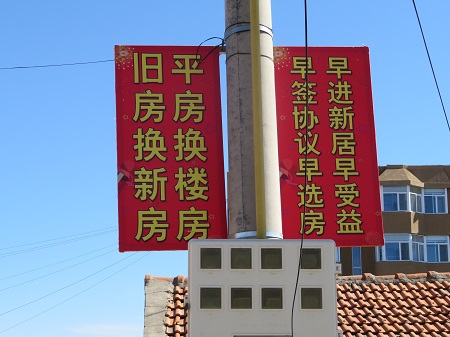
Leaving the pagoda behind, I walk south towards the site of the Liao Superior Capital.
Inner Mongolia | Khitan | Liao dynasty | Pagodas
Index of Rambling Antiquarian Blog Posts
Rambling Antiquarian on Google Maps
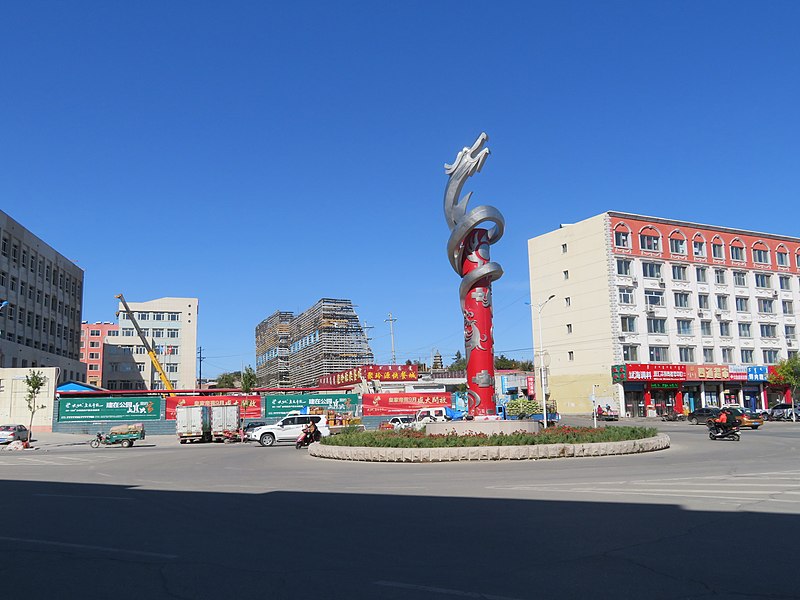

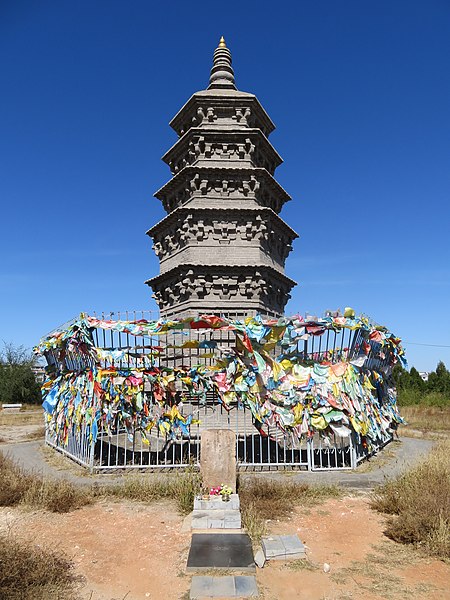

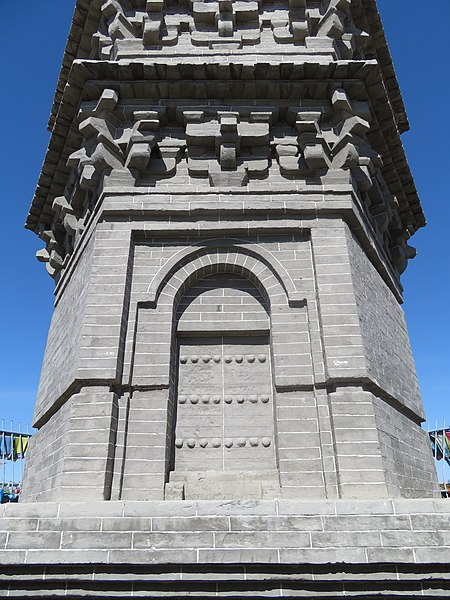

.jpg)

